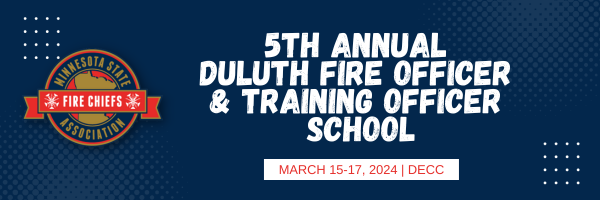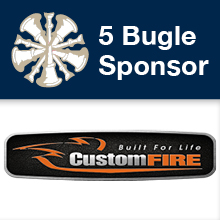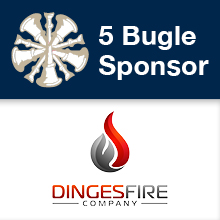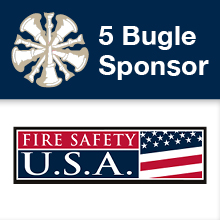|
2023 Duluth Fire Officer & Training Officer School
Attendees can register for one (1) 12-hour class, which is held on Saturday and Sunday. Please click here to view class descriptions. 10 Minutes and Beyond The overall goal of the course “10 Minutes and Beyond” is to build on the training obtained in the previous MSFCA Fire Officers School class: “The First 5 Minutes”. The purpose of this training will emphasize the behaviors necessary to ensure safe incident ground operations through lecture, demonstrations, individual, and group activities.
The course will be scenario driven and will attempt to focus on fire-ground operations, crash incidents, search incidents, and natural disasters. Critical Thinking for Fire Ground Operations Each and everyday Emergency Services respond to numerous calls that require different approaches to best control the situation. Often, the decisions of controlling that situation happen within seconds. Some of these situations end up going longer than the “normal” call. This critical thinking session is designed to provide you a background and enhance your decision making on a scene both initially and long term incidents. Learn from case studies and lessons learned on the ICS City a 5 ft. x 32 ft. training city that you will be utilizing during the session. The session scenarios will start at a baseline level and grow in intensity and complexity. The ICS City allows for students to utilize the concepts learned during class and their “real world” experience and apply to the exercise that is unfolding in front of them “in the city”. The session will have training components and many “hands on” opportunities with the ICS City.
EMS Attack Crew: Managing the Medical Call as a First-In Fire Crew As the responsibilities of the modern day fire department increase, one of the most prominent roles for fire crews to serve is the role of the EMS First Responder. In 2021, fire departments across the US reported that 60-80% of the total calls they responded to were medical in nature. As this growth trend continues, it becomes more important than ever that our crews be prepared to manage a medical scene efficiently, confidently and effectively. The 12 hour EMS Attack Crew course takes an in depth looks at a wide variety of 911 medical calls and provides a collection of strategies and tactics to help fire departments enter these calls with confidence and a clear idea of the things that can be done to ensure the patient gets their best chance at a positive outcome. Topics include Time Control, Information Collection, Orchestrating the Scene from an Officer’s Perspective, the Vital Task of Collecting Vitals and the Art of the Smooth Hand-off. The course moves at a steady pace, using presentations, videos and scenarios to accommodate all kinds of learning styles. A program developed by Scott Spinks, EMS Attack Crew is designed based on Scott’s experiences as a fire captain and as a critical care paramedic in the busiest county in Minnesota.
Participants will learn the importance of conducting a thorough size up before committing limited resources. This course will develop company officers’ incident scene supervisory and management capabilities in structural fire operations. Key content includes discussion and scenario based practice on controlling and implementing the activities that need to be done to successfully deal with personnel performing the following operations; rescue and ventilation, confinement and extinguishment, water supply, exposures, offensive and defensive operations, salvage, overhaul and support. This course takes a practical, common sense approach to fighting fires in single-family homes, multi-family apartment buildings, light industrial and commercial structures. It takes into account the realities of today's fire service – that is, most fire departments in this country are, understaffed, less experienced and involved in more EMS than ever before. If your incidents seem to run themselves and you’re not in control then this course is for you. Good to Great Leadership State Fire Marshal Track: Manage Demand for Service by Managing Fire Risk
Engagement is a very important and effective element of your training program. The content experts who are currently training within your department can take their trainings to the next level by adding the presentation skills necessary to increase retention. Learning how to train with a high level of leadership command presence is the key to delivering a strong interactive training. The most engaging trainers understand the importance of having a structure that allows for intentionally placed participation and discussion that leave the firefighters feeling empowered and confident. Engaged learners participate actively in training and do it willingly with significantly increased retention. Wildland Urban Interface for the Structural Company Officer As a responder in a WUI incident, the company officer may be placed in one of many roles, such as incident commander (IC), operations section chief (OSC) or taskforce leader or one of many support roles. |







